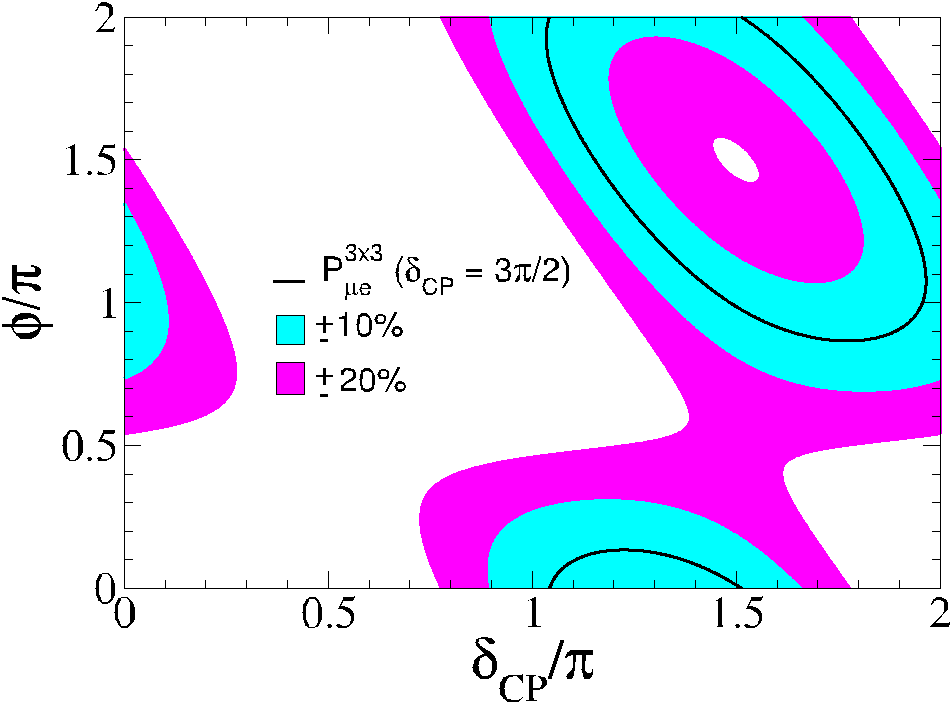Neutrino oscillations and the matter-antimatter asymmetry
 The discovery of neutrino oscillations represents a major scientific milestone, for which Takaaki Kajita and Arthur McDonald were awarded the Nobel Prize in Physics 2015. By proving that neutrinos oscillate, the SNO and Super-Kamiokande experiments also showed that neutrinos are massive, in contrast to that suggested by the Standard Model of particle physics.
The discovery of neutrino oscillations represents a major scientific milestone, for which Takaaki Kajita and Arthur McDonald were awarded the Nobel Prize in Physics 2015. By proving that neutrinos oscillate, the SNO and Super-Kamiokande experiments also showed that neutrinos are massive, in contrast to that suggested by the Standard Model of particle physics.
Neutrinos come in three varieties, each associated to one of the charged leptons: the electron, the muon or the tau. These varieties are called "flavors" and we usually say that a neutrino has either electron, muon or tau flavor. Neutrinos, which carry no electric charge, can interact with other particles and "acquire charge" in the process, transforming thus into the corresponding charged lepton depending on their flavor. Oscillations consist in a continuous change of flavor as the neutrino travels through space, thereby changing the way it interacts and, most importantly, the lepton to which it is associated.
The phenomenon of neutrino oscillations is closely related to the masses because they sort of "connect" the three flavors, and allow neutrinos to change from one to another along their way. Interestingly, oscillation experiments allow to determine many properties of the neutrino masses, but the oscillation process does not store information about the actual value of the mass. As of today we know that they are very small, more than a million times lighter than the electron mass, but we haven't still got a measurement of their absolute scale. Therefore, besides a model that explains the existence of neutrino masses, a physical mechanism is required to justify why they are so much smaller than the masses of the other particles.
One of the current paradigms states that neutrino masses are linked to heavy particles that affect some of their properties. These particles would not have been observed so far because their production requires very high energies and our experiments have not reached that level yet. However, if such particles exist they could show up indirectly in the neutrino masses themselves. In particular, the oscillations might be different from what is expected if the heavy particles are not there.
IFIC researchers Mariam Tortola and José Valle have studied how the existence of heavy neutrinos could affect the oscillations of light neutrinos in experiments for which neutrinos are produced in a particle accelerator and are measured at distances of several hundred kilometers. Along this journey neutrinos have enough time to oscillate and we can see changes in their flavor, and whether these changes correspond to a "normal" oscillation, with no heavy particles involved, or are different from that. This type of oscillation has been already observed in experiments in Japan (T2K) and the United States (NOνA), and they allow to measure some fundamental properties of neutrinos, such as the difference between their masses and how strongly they mix the three flavors.
These properties have been measured with good precision in oscillation experiments with different setups: using neutrinos from accelerators, from nuclear reactors, from the Sun or the upper atmosphere. However, there is one parameter that we haven't been able to determine yet: it corresponds to the possibility that neutrinos and their antimatter, the antineutrinos, oscillate in different ways. Although matter and antimatter behave similarly in almost all physical processes, we know of some phenomena in which they differ. The most evident proof that this is indeed the case is that we live in a universe composed mostly of matter, where all antimatter has essentially disappeared. The processes in which matter and antimatter behave differently are interesting because they provide a window to investigate this peculiarity of our universe, and perhaps neutrino oscillations constitute one such windows.
The differences between neutrino and antineutrino oscillations are controlled by the δCP parameter, whose value is not yet known. In their analysis, our colleagues have studied how the precision measurements of δCP which are to be performed in future experiments, such as DUNE in the United States, may be affected by the existence of heavy neutrinos. Specifically, the existence of these neutrinos would imply the presence of a new phase, φ, that would hinder a precise determination of δCP.
The figure shows how φ alters the effects of δCP: for some value of δCP the result will be different depending on the value of φ. The reverse is also correct: if we observe certain effect we can no longer infer a single value of δCP, but a combination of different values for δCP and φ. Thus, the sensitivity of accelerator experiments to the δCP parameter could be affected significantly, calling for the redesign of the currently planned experimental setups. Fortunately, the effect of φ on the observable processes is predictable, and that will allow us to revisit the data and find out if heavy neutrinos are interfering with the oscillations.
The LBNF/DUNE project is an ambitious international collaboration that aims to send the world’s most intense neutrino beam, produced at Fermilab in Chicago, to the DUNE detector, a huge liquid argon detector buried more than one kilometer uderground at the Sanford Underground Research Facility (SURF) in South Dakota, 1300 kilometers away from Fermilab. About 800 scientists from 27 countries and 150 institutions are involved in the experiment, including IFIC.
"New Ambiguity in Probing CP Violation in Neutrino Oscillations", O. G. Miranda, M. Tórtola, J. W. F. Valle. Phys. Rev. Lett. 117, 061804
















